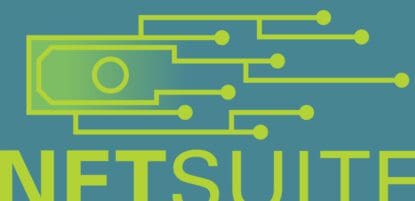As finance departments face ongoing pressure to achieve more with fewer resources, the adoption of automated solutions has become a strategic imperative.
In the pursuit of efficiency, many business and finance leaders are turning to B2B payment automation, leveraging technology to refine and accelerate their financial processes. Understanding the nuances of B2B payment automation and how it supports efficient accounts payable (AP) operations can help youmake more informed investments in automation tools for your organization.
Key takeaways
- While more organizations are turning to electronic payments for their efficiency and security, paper checks continue to hold a crucial role in the B2B payment landscape due to their wide acceptance and ease of use.
- B2B payment automation minimizes fraud and human error, streamlining the payment process and making it more secure and reliable.
- The right payment automation tool can transform an organization’s AP process, ensuring seamless integration with existing enterprise resource planning (ERP) systems and enhancing operational efficiency.
What is B2B payment automation?
B2B payment automation refers to the use of technology to streamline and automate an organization’s processes for making payments to another business. This includes the automation of invoice receipt, approval workflows, payment execution, and reconciliation. B2B payment automation helps organizations reduce manual intervention, minimize errors, and enhance efficiency in their finance operations.
Trends in B2B payments
The B2B payments landscape is constantly evolving. Recent trends include shifting payment preferences and rising staffing challenges for accounting teams. Let’s take a closer look at these trends below.
Electronic payment adoption is increasing
A growing number of organizations are adopting electronic payment methods to replace traditional paper checks. According to MineralTree’s 8th annual State of AP Report, 70% of buyers plan to convert more AP spend to digital payments. This trend is primarily driven by the need for faster, more secure, and cost-effective payment solutions.
Checks remain important for many organizations
Despite the rise in electronic payments, checks remain a crucial part of the B2B payment landscape due to their familiarity and wide vendor acceptance. In fact, the State of AP Report revealed that 93% of organizations still use paper checks for at least some of their payments.
The accounting staffing shortage persists
The accounting profession is facing a significant shortage of skilled professionals, forcing teams to do more with fewer resources. This talent gap can lead to increased workloads for existing staff and subsequent delays in financial reporting.
Types of B2B payments
There are various B2B payment types, but most organizations rely on automated clearing house (ACH) payments, virtual cards, and checks.
ACH
ACH payments enable organizations to securely transfer money from one bank to another through the ACH network. This is a popular electronic payment method given the high levels of security, cost-effectiveness, and suitability for recurring transactions.
Virtual card
Virtual cards offer a secure and efficient payment method that’s similar to a traditional credit card. The key difference is that virtual cards use randomly generated tokenized numbers, allowing businesses to make payments without exposing their actual payment credentials. Virtual cards are ideal for single-use transactions and provide detailed tracking of expenditures.
Check
Checks are a traditional payment method that many organizations still use due to their familiarity and wide acceptance among vendors. However, traditional paper checks require manual processes to issue and pose risks like fraud exposure and the potential for mail delays.
Real-Time Payments (RTP)
Real-Time Payments (RTP®) and FedNow have emerged as alternatives to ACH for secure bank-to-bank transfers. Through these new payment methods, money can be sent and received within seconds, with no funds clearing period at any time of day and any day of the week. There is no downtime, even on weekends and holidays.
There are several challenges to widespread adoption. These new payment methods bring more complex infrastructure and integration requirements, not just for businesses but also for the banks and automation vendors initiating transactions. There are also stringent regulatory requirements and cost implications with adoption of this technology.
8 key benefits of automating B2B payments
Automating B2B payments offers far-reaching benefits to your organization, improving efficiency and visibility while reducing costs and minimizing errors. Below are the top advantages of automating B2B payments.
1. Reduce fraud
B2B payment automation bolsters internal controls by enhancing the accuracy and efficiency of the entire AP process. Advanced automated solutions also flag suspicious payment activity, reducing the risk of unauthorized or fraudulent transactions.
2. Gain more visibility into the process
Digitizing B2B payments enhances visibility by providing real-time insights into payment statuses. This transparency supports more effective decision-making by allowing you to monitor spending patterns and cash flow. It also helps you identify inefficiencies and bottlenecks, enabling quicker resolutions and better financial management.
3. Improve vendor relationships
The State of AP Report revealed that86% of finance leaders believe vendor relationships have grown more important over the past year. Automating B2B payments helps keep payments accurate and on time, which in turn fosters stronger relationships with vendors.
4. Reduce human error
By eliminating the need for manual data entry, B2B payment automation significantly reduces the likelihood of human error in the payment process. Streamlining the process also speeds up transaction times and lets staff focus on more strategic tasks rather than rectifying mistakes.
5. Improve the check run
The right automation solution expedites the check run from mail to print. By scheduling payments directly in your system and automating the printing and mailing of checks, you can reduce the costs and manual errors associated with traditional checks.
6. Easily enroll vendors in virtual card
Even with an efficient check run process, the cost of issuing and processing checks typically ranges between $2.01 and $4.00 per check according to the National Automated Clearinghouse Association. But while electronic payments offer a more cost-effective avenue, over half of respondents in the SState of AP Report said enrolling vendors was either their first or second largest challenge in adopting more electronic payment methods. The right solution makes it easy to enroll vendors in efficient payment options like virtual cards.
Did you know? MineralTree helps you enroll vendors in virtual cards for more efficient and streamlined payments.
7. Streamline international payments
Automation simplifies the complexities of international payments, ensuring timely and accurate cross-border transactions. The right solution allows you to process multi-currency invoices more efficiently and avoid the fees typically associated with traditional bank wires. This provides greater transparency into the process, making it easier to manage both domestic and international payments on a single platform.
8. Improve the invoice approval process
Automating and digitizing invoice approval workflows accelerates the entire payment cycle by enabling approvals from anywhere and at any time. It also lets you to track invoice statuses in real time, ensuring a more transparent and error-free process. Together, these improvements can significantly reduce risks like payment delays and duplicate payments.
4 steps to investing in the right B2B payment automation tool
Selecting the right B2B payment automation tool involves a strategic approach to ensure the solution not only boosts efficiency but also aligns with your specific business needs.
Below are four essential steps to guide your decision-making process:
1. Audit current challenges and processes
Start by conducting a thorough assessment of your existing payment processes to identify any inefficiencies, delays, or errors within your current system. This initial step helps pinpoint specific areas where automation could bring the most benefit, such as reducing manual data entry or speeding up payment cycles.
2. Evaluate tools for capabilities
Research and assess various automation solutions to identify one that offers features tailored to your company’s needs. Key capabilities to look for include automated invoice processing, seamless payment execution, and comprehensive reconciliation features. These functionalities are essential for improving accuracy and freeing up staff to focus on strategic initiatives that drive business growth, rather than routine processing tasks.
3. Ensure the tool can integrate with your ERP system
It’s critical for your payment automation tool to integrate smoothly with your existing ERP system. Effective integration allows for seamless data exchange and process automation across financial systems, ensuring that data remains consistent and accessible across all business units.
4. Automate the end-to-end AP process
Aim for a tool that automates the entire AP process, including the automation of invoice receipt, approval workflows, payment execution, and final reconciliation. An end-to-end AP automation solution increases efficiency and enhances visibility and control over the entire payment lifecycle. As a result, you can reduce the risk of financial discrepancies and improve compliance.
Final thoughts
B2B payment automation is crucial for maintaining efficient and agile financial operations. MineralTree’s AP automation solution can streamline your entire AP process, reducing costs, helping you maintain compliance, and empowering your team to do more with less. Learn how MineralTree can help. Request a demo today!

B2B payment automation FAQs
1. What are the most popular B2B payment methods?
The most popular B2B payment methods include ACH, virtual cards, and checks, each offering unique benefits and use cases. ACH payments are favored for their low cost and reliability, making them suitable for regular and large transactions. Virtual cards provide enhanced security and control, ideal for managing travel expenses and vendor payments. Checks are still widely used due to their widespread acceptance and ease of use, despite downsides such as their high costs and susceptibility to theft and fraud.
2. What is the difference between P2P and B2B payments?
P2P (peer-to-peer) payments are transactions between individuals, often facilitated by mobile apps. Typical use cases include splitting bills or giving gifts. B2B (business-to-business) payments are transactions between businesses, involving more complex processes and larger amounts, usually integrated with ERP systems to align with corporate finances and operations.
3. Which B2B payment processes can be automated?
Various B2B payment processes can be automated, including invoice receipt, approval workflows, payment execution and reconciliation. Automation in invoice receipt helps capture details accurately, reducing errors. Automated approval workflows expedite the payment process by ensuring that payments are processed faster and with less manual intervention. Automated reconciliation aids in matching payments to invoices efficiently, enhancing financial accuracy and visibility.



